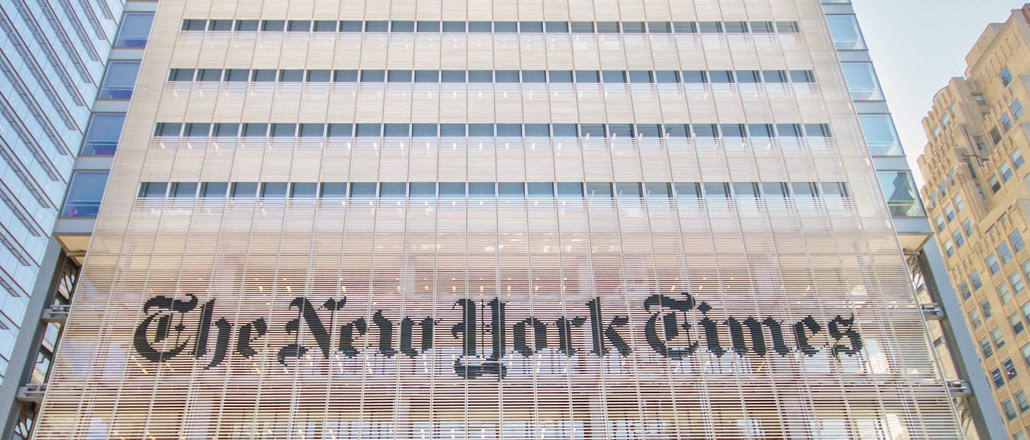
New York Times CEO Mark Thompson is not ashamed the world knows intimate details about his company’s struggles.
Rather, he heralded the fact that The Times’ innovation report — an in-depth account of how The Times was actually lagging in innovation — was leaked and so widely discussed.
“It was right that we would share it with our readers,” Thompson said Wednesday morning at media agency GroupM’s What’s Next conference in New York. (The Times didn’t immediately share the report with its readers, though; it was leaked to and first published by BuzzFeed.)
Thompson addressed The Times’ digital challenges, challengers (Vice, The Huffington Post) and why the newspaper will continue phasing out display ads as it continues its transition to mobile.
The Times is bullish on native ads…
As The Times’ readership goes mobile, the publication will phase out display ads in favor of native advertising.
“Display has real value, but it feels transitional, specifically when you’re talking about a smartphone-centric world. Advertisements are going to have to be in-stream and intrinsically attractive enough to engage readers,” Thompson said.
…but less so on programmatic
“One false move is to assume that everything is going to be done mechanistically,” Thompson said. “Programmatic is going to be part of our future. But actually there’s potential for creativity in regards to advertising on the devices we now use.”
On transitioning influence online
There is perhaps no newspaper as venerated as The Times, but no one knows you’re prestigious on the Internet. Thompson acknowledged The Times’ need to more proactively assert itself online.
“There was a time when the influence of The Times was narrower than it was today. Influence today is more multifarious and needs much more active involvement of the content producers, reporters and editors. Our responsibility is to engage audiences rather than relying on a printing press and a truck to do that for us.”
Encouraging staffers to be more active online
Better reaching readers starts with Times staffers, Thompson said. While some Times journalists have embraced audience-engagement tools like Facebook and Twitter, there’s been a fuss about high-ranking members — namely editor-in-chief Dean Baquet – being Luddites in that regard.
“We need to generalize [having our journalists engage readers],” Thompson said. “We need to make sure that it’s not a handful of stars but part of the workflow.”
On Vice
Thompson lauded Vice’s Hunter Thompson-inspired approach to the news but reminded the crowd that The Times, too, dabbles in it, too.
“Vice is a brilliant packaging and focusing of a known style of experiential reporting that is found in the New York Times,” Thompson said. “The technical stuff they’re doing around amplification and how they think intrinsically about multimedia is interesting.”
On The Huffington Post
Thompson said HuffPo’s aggregation model was far less defensible than Vice’s, though.
“The Huffington Post is easier to replicate, such as a lot of the stuff we’re doing now around aggregation with NYT Now. Trying to build an entire business model around aggregation is tough,” he said.
On the filter bubble
While The Times has become increasingly dependent on Facebook, Google and Twitter for distribution, it has no plans to co-opt their algorithms.
“The New York Times brand stands for and will always stand for a very high human component. Not clever tricks of news gathered by other people, or defining news by popularity, but people figuring out from ground zero if this is an important story,” Thompson said.
More in Media

Publishers revamp their newsletter offerings to engage audiences amid threat of AI and declining referral traffic
Publishers like Axios, Eater, the Guardian, theSkimm and Snopes are either growing or revamping their newsletter offerings to engage audiences as a wave of generative AI advancements increases the need for original content and referral traffic declines push publishers to find alternative ways to reach readers.

The Guardian US is starting its pursuit of political ad dollars
The Guardian US is entering the race for political ad dollars.

How much is Possible’s future in Michael Kassan’s hands?
Some people in the know at Possible said they see the conference taking a bite out of Cannes’ attendance, most acutely by U.S.-based marketers who could save money by staying on this side of the Atlantic.





